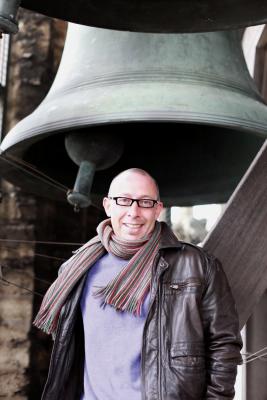
Bok Tower Gardens in Lake Wales, Florida, has announced the appointment of Belgian carillonneur Geert D’hollander. He is the fourth carillonneur of the Bok Tower since it was dedicated by President Calvin Coolidge in 1929. The tower houses a 60-bell carillon cast by the Taylor Bellfoundry of Loughborough as well as the Anton Brees Carillon Library, one of the largest collections of campanological materials. D’hollander served as composer in residence at Bok Tower Gardens earlier this year and performed in the spring carillon festival. In Belgium he held positions as carillon composition teacher at the Royal Belgian Carillon School and carillonneur of Antwerp, Ghent, Sint-Niklaas, and Lier.


